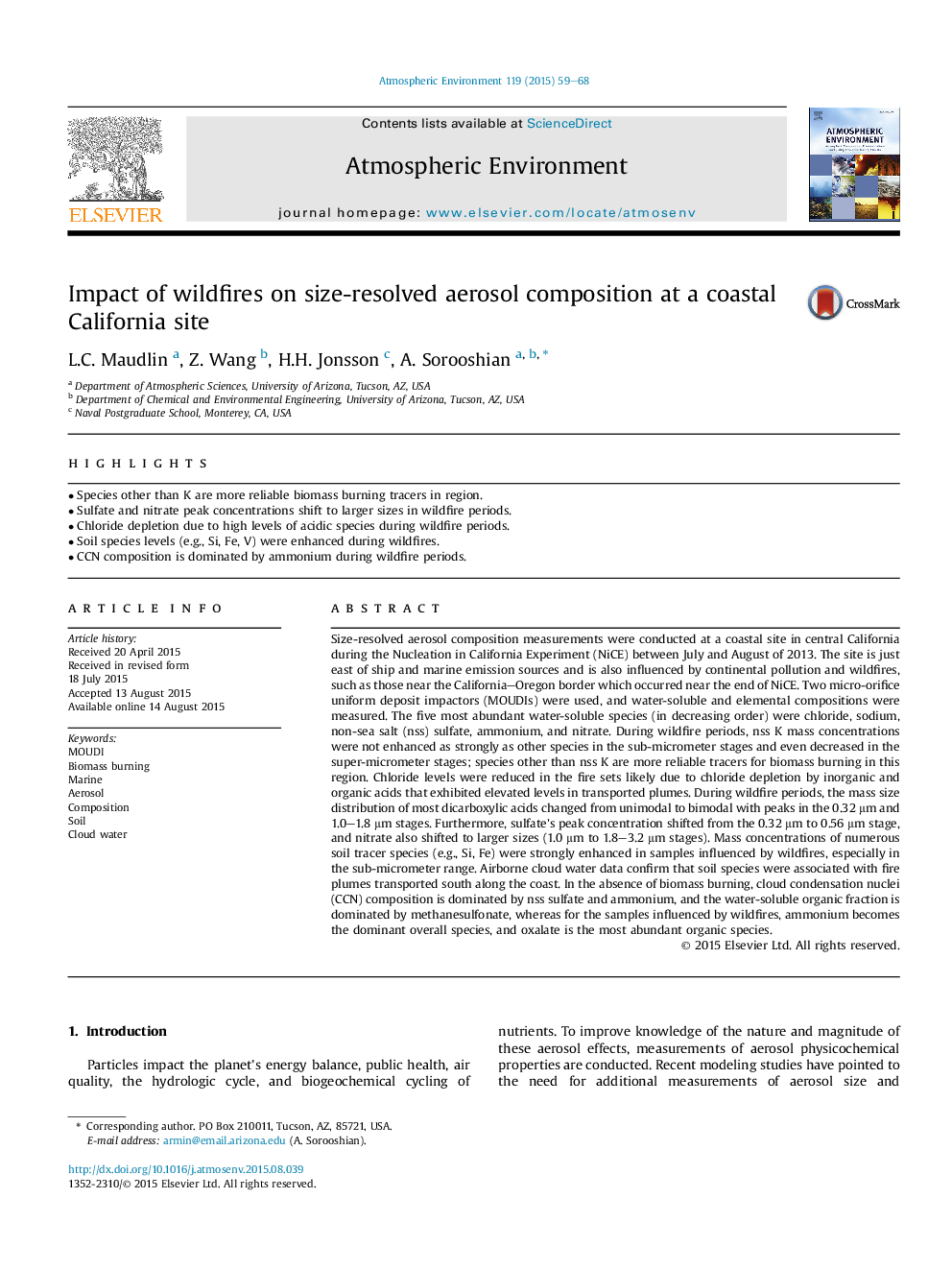| کد مقاله | کد نشریه | سال انتشار | مقاله انگلیسی | نسخه تمام متن |
|---|---|---|---|---|
| 6337611 | 1620352 | 2015 | 10 صفحه PDF | دانلود رایگان |
عنوان انگلیسی مقاله ISI
Impact of wildfires on size-resolved aerosol composition at a coastal California site
ترجمه فارسی عنوان
تأثیر آتش سوزی ها بر ترکیبات آئروسل حل شده در اندازه ی یک سایت ساحلی کالیفرنیا
دانلود مقاله + سفارش ترجمه
دانلود مقاله ISI انگلیسی
رایگان برای ایرانیان
کلمات کلیدی
موودی، سوختن زیست توده، دریایی، آئروسل، ترکیب بندی، خاک ابر آب
موضوعات مرتبط
مهندسی و علوم پایه
علوم زمین و سیارات
علم هواشناسی
چکیده انگلیسی
Size-resolved aerosol composition measurements were conducted at a coastal site in central California during the Nucleation in California Experiment (NiCE) between July and August of 2013. The site is just east of ship and marine emission sources and is also influenced by continental pollution and wildfires, such as those near the California-Oregon border which occurred near the end of NiCE. Two micro-orifice uniform deposit impactors (MOUDIs) were used, and water-soluble and elemental compositions were measured. The five most abundant water-soluble species (in decreasing order) were chloride, sodium, non-sea salt (nss) sulfate, ammonium, and nitrate. During wildfire periods, nss K mass concentrations were not enhanced as strongly as other species in the sub-micrometer stages and even decreased in the super-micrometer stages; species other than nss K are more reliable tracers for biomass burning in this region. Chloride levels were reduced in the fire sets likely due to chloride depletion by inorganic and organic acids that exhibited elevated levels in transported plumes. During wildfire periods, the mass size distribution of most dicarboxylic acids changed from unimodal to bimodal with peaks in the 0.32 μm and 1.0-1.8 μm stages. Furthermore, sulfate's peak concentration shifted from the 0.32 μm to 0.56 μm stage, and nitrate also shifted to larger sizes (1.0 μm to 1.8-3.2 μm stages). Mass concentrations of numerous soil tracer species (e.g., Si, Fe) were strongly enhanced in samples influenced by wildfires, especially in the sub-micrometer range. Airborne cloud water data confirm that soil species were associated with fire plumes transported south along the coast. In the absence of biomass burning, cloud condensation nuclei (CCN) composition is dominated by nss sulfate and ammonium, and the water-soluble organic fraction is dominated by methanesulfonate, whereas for the samples influenced by wildfires, ammonium becomes the dominant overall species, and oxalate is the most abundant organic species.
ناشر
Database: Elsevier - ScienceDirect (ساینس دایرکت)
Journal: Atmospheric Environment - Volume 119, October 2015, Pages 59-68
Journal: Atmospheric Environment - Volume 119, October 2015, Pages 59-68
نویسندگان
L.C. Maudlin, Z. Wang, H.H. Jonsson, A. Sorooshian,
